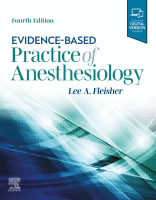Physical Address
304 North Cardinal St.
Dorchester Center, MA 02124

INTRODUCTION Pulmonary aspiration is a recognized risk for patients undergoing anesthesia and surgery and for patients with a variety of underlying medical conditions. For the surgical patient, although aspiration can occur at any time during the perioperative period, the risk…

INTRODUCTION One of the most common concerns of physicians and patients is the potential adverse effects of anesthesia on recovery times after surgical procedures. Although mortality rates for anesthesia have continued to decrease over the years, postoperative complications continue to…

INTRODUCTION Experimental evidence has indicated that inhalational anesthetics have protective effects against the consequences of cardiac ischemia-reperfusion injury. These protective properties have been related to pharmacologic pre- and postconditioning effects but also to a modulation of the inflammatory response. Although…

INTRODUCTION Regional and general anesthesia techniques can individually offer advantages to a patient with a known difficult airway. The superiority of one technique over the other is hotly debated, and the complexities of study design, as well as potential ethical…

INTRODUCTION Cigarette smoking is the number-one cause of avoidable death within the United States. Thirty-four million Americans smoke cigarettes and half of them will die of this, contributing 480,000 deaths annually. Medical costs attributable to smoking in the United States…

INTRODUCTION The use of cognitive aids in health care, specifically in the field of anesthesiology, is becoming increasingly popular. Cognitive aids are tools that help users complete a specific task, and checklists are a type of cognitive aid that detail…

INTRODUCTION Over the past few decades, advancements such as the laryngeal mask airway (LMA), the flexible intubation scope (FIS), and video-assisted laryngoscopy (VAL) have revolutionized the field of airway management. Nevertheless, difficulty with airway management still poses a challenge to…

INTRODUCTION Despite advances in anesthesia care over the past decades, perioperative organ injury remains the leading precursor to death after surgery. Perioperative renal injury is one of the most common postoperative complications and leads to increased health care expenditure, prolonged…

INTRODUCTION The use of perioperative beta-blockade (PBB) for the reduction of cardiac risk in patients undergoing noncardiac surgery came to prominence in the late 1990s, and continued excitement remained strong during the first decade of the twenty-first century. Support for…

INTRODUCTION It is estimated that more than 280 million surgeries take place globally each year. More than one-third of patients presenting for surgery have hypertension and are taking either an angiotensin-converting enzyme inhibitor (ACE-I) or angiotensin receptor blocker (ARB). Since…